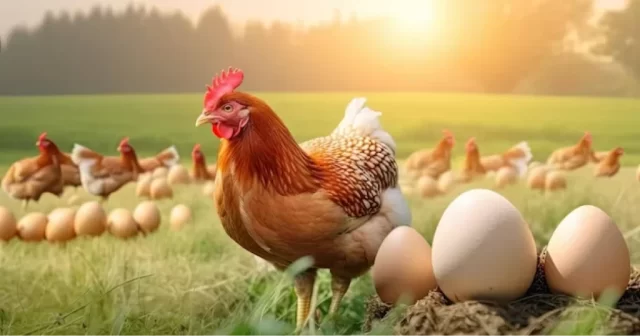
Egg and Chicken Market Trends: 2025 Outlook in India
The poultry industry in India has experienced remarkable growth over the years, emerging as one of the fastest-growing segments of the agricultural sector. As we step into 2025, the dynamics of the egg and chicken market are expected to evolve further, influenced by factors such as consumer demand, government policies, technological advancements, and global trends. This article provides a comprehensive outlook on the Indian egg and chicken market, highlighting key trends, challenges, and opportunities that lie ahead.
Current State of the Indian Poultry Industry
India is the third-largest producer of eggs and the fourth-largest producer of chicken in the world. With a rapidly growing population, increasing protein consumption, and changing dietary patterns, poultry products have become a staple in Indian households. The industry contributes significantly to the economy, providing employment to millions and playing a crucial role in nutritional security.
The sector is broadly divided into two segments:
- Layer Industry – Focuses on egg production.
- Broiler Industry – Focuses on chicken meat production.
In recent years, there has been a surge in per capita consumption of eggs and chicken due to their affordability, nutritional value, and increasing health consciousness among consumers.
Key Trends Shaping the Egg and Chicken Market in 2025
1. Rising Demand for Protein-Rich Diets
With growing awareness about health and nutrition, Indian consumers are shifting towards protein-rich diets. Eggs and chicken, being excellent sources of high-quality protein, are gaining popularity across demographics. The government’s initiatives to promote protein consumption through mid-day meal programs and nutritional awareness campaigns are further driving demand.
2. Expansion of Processed and Value-Added Poultry Products
The demand for processed and ready-to-cook poultry products is increasing in urban and semi-urban areas. Consumers are looking for convenience, hygiene, and high-quality products, leading to the growth of frozen chicken, marinated meats, and egg-based products such as mayonnaise and protein powders. Companies are investing in processing infrastructure to cater to this evolving demand.
3. Price Volatility and Cost of Production
The poultry industry faces frequent fluctuations in feed prices, mainly due to changes in soybean and maize costs. Since feed accounts for nearly 70% of the production cost, any price hike directly impacts poultry farmers. Government interventions in ensuring stable feed supply and promoting alternative feed sources like insect-based protein could help mitigate these challenges in 2025.
4. Integration of Technology in Poultry Farming
Technology adoption in poultry farming is revolutionizing the sector. Farmers are now using Artificial Intelligence (AI), Internet of Things (IoT), and automation to monitor flock health, optimize feed usage, and enhance productivity. Smart poultry farms equipped with climate control systems, automated feeders, and disease detection tools are becoming more prevalent in India.
5. Government Policies and Budget 2025 Implications
The Indian government has been supporting the poultry sector through various schemes and subsidies. The Union Budget 2025 is expected to allocate funds for:
- Infrastructure Development: Cold storage and supply chain improvement.
- Credit Facilities: Easy loans and financial assistance for small and medium-scale poultry farmers.
- Disease Control Programs: Strengthening biosecurity measures and vaccination programs to combat avian influenza and other poultry diseases.
- Export Incentives: Encouraging poultry exports by easing trade regulations and meeting international standards.
6. Rising Concerns Over Bird Flu and Biosecurity Measures
India has witnessed occasional outbreaks of avian influenza, causing significant economic losses. In 2025, strict biosecurity measures, enhanced surveillance, and vaccination programs are expected to be prioritized to prevent disease outbreaks. Farmers are being trained to implement better hygiene and farm management practices.
7. Growth of Organic and Free-Range Poultry Farming
With increasing consumer preference for organic and antibiotic-free poultry products, free-range and organic farming are gaining traction. More farmers are shifting towards cage-free egg production and antibiotic-free chicken rearing to meet market demands. Certification programs for organic poultry farming are also expected to expand.
8. Online and Retail Expansion
E-commerce and modern retail outlets are becoming key distribution channels for poultry products. Companies are leveraging online platforms to sell fresh eggs, chicken, and value-added products directly to consumers. The farm-to-fork model, ensuring traceability and freshness, is gaining popularity among urban consumers.
9. Climate Change and Sustainability Challenges
Extreme weather conditions, rising temperatures, and unpredictable rainfall patterns are affecting poultry farming. In 2025, there will be a greater emphasis on sustainable farming practices, including:
- Renewable energy sources such as solar-powered poultry farms.
- Water conservation techniques.
- Eco-friendly waste management solutions.
10. Export Market and International Trade Opportunities
India’s poultry export market is growing steadily, with increasing demand from Middle Eastern and Southeast Asian countries. In 2025, the focus will be on meeting global quality standards, improving processing facilities, and enhancing branding to boost poultry exports.
Challenges Facing the Poultry Industry
Despite the positive growth outlook, the poultry industry faces several challenges:
- Fluctuating Feed Prices: Dependence on imports for soybean and maize.
- Disease Outbreaks: Threat of avian influenza and other poultry diseases.
- Regulatory Compliance: Meeting stringent food safety and export regulations.
- Environmental Concerns: Waste disposal and carbon footprint management.
- Market Volatility: Unpredictable consumer demand and economic fluctuations.
Opportunities for Growth and Investment
The future of India’s poultry industry looks promising, with ample opportunities for growth and investment:
- Investments in Modern Infrastructure: Development of automated poultry farms and advanced processing units.
- Expansion into Rural Markets: Increasing poultry penetration in tier-2 and tier-3 cities.
- Innovation in Feed Alternatives: Exploring cost-effective and sustainable feed options.
- Skill Development and Training: Empowering farmers with knowledge of modern poultry management techniques.
- Public-Private Partnerships: Collaboration between government bodies and private sector players to drive industry growth.
Conclusion
As we move through 2025, India’s egg and chicken market is set for substantial transformation, driven by changing consumer preferences, technological innovations, and supportive government policies. While challenges such as disease outbreaks, feed price volatility, and regulatory compliance persist, the industry is well-positioned to overcome these hurdles through strategic investments and sustainable practices. With a strong domestic market and emerging export potential, the Indian poultry sector is on a promising trajectory toward growth and resilience.





























